Tucked away in the quiet countryside of Rajasthan’s Jhalawar district, the Kolvi Caves are an intriguing testament to ancient Buddhist heritage. Carved into volcanic rock, these centuries-old caves transport you back to the 1st-3rd century CE, when monks meditated in their quiet chambers. The serene landscape, dotted with simple stone stupas and tranquil viharas, offers a peaceful escape for history buffs and spiritual seekers alike. As you explore these lesser-known relics, you’ll uncover a fascinating chapter of India’s Buddhist past, waiting to be rediscovered.
Kolvi Caves Location
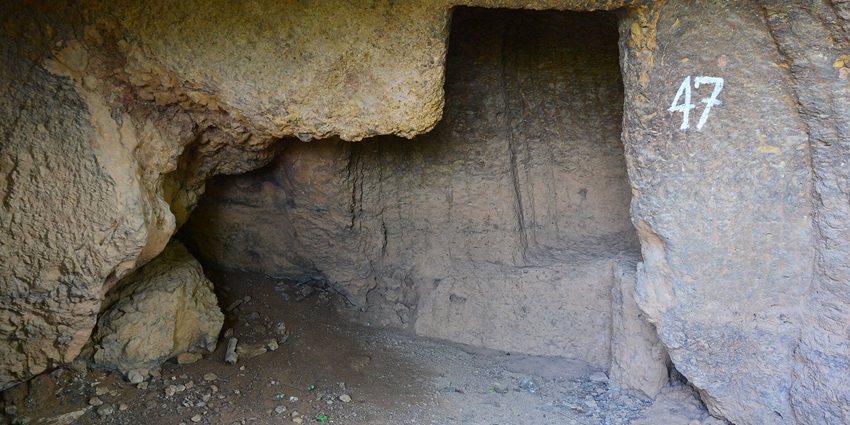
Photo: Siddharth tiwari / Wikimedia Commons
Reaching the Kolvi Caves is an adventure, offering a scenic journey through Rajasthan’s countryside. The caves are located around 120 kms from Kota, a major city well-connected by road and rail. From Kota, you can hire a taxi or take a local bus to Kolvi village. The nearest airport is in Jaipur, about 300 kms away. From Jhalawar, the district headquarters, the caves are approximately 50 kms, making it an easy drive for travellers eager to explore these ancient Buddhist relics hidden in Rajasthan’s rugged terrain.
Suggested Read: Places To Visit In Rajasthan
How To Reach Kolvi Caves
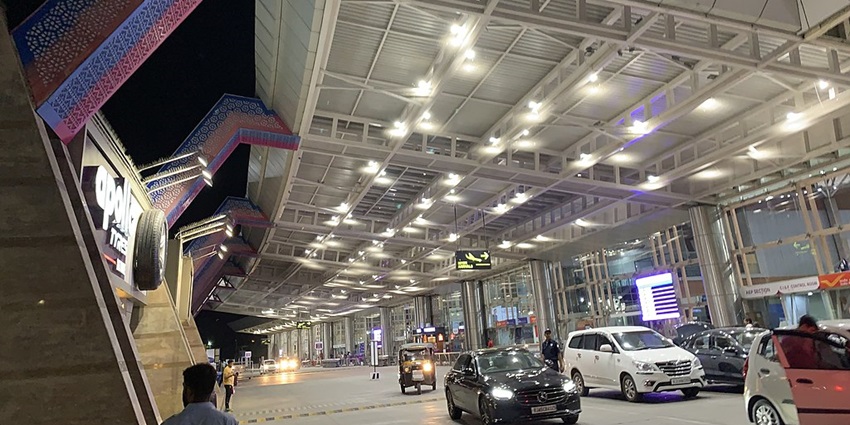
Photo: Chainwit / Wikimedia Commons
Reaching the Kolvi Caves is a delightful journey through Rajasthan’s scenic landscapes, making it a unique destination for travellers seeking hidden gems of history and spirituality.
By Air: The nearest airport is in Jaipur, about 300 kms from Kolvi. From Jaipur, you can hire a taxi or board a bus to Kota or Jhalawar.
By Train: The nearest major railway station is Kota Junction, around 120 kms away. There are several options for taxis and bus services from there.
By Road: Kolvi is well-connected by road, with local buses and taxis available from Jhalawar (50 kms) and Kota (120 kms).
Places To Visit Around Kolvi Caves
Exploring the area around Kolvi Caves reveals hidden gems of history, architecture, and natural beauty. Here are some must-visit places that complement your journey!
1. Jhalawar Fort / Garh Palace
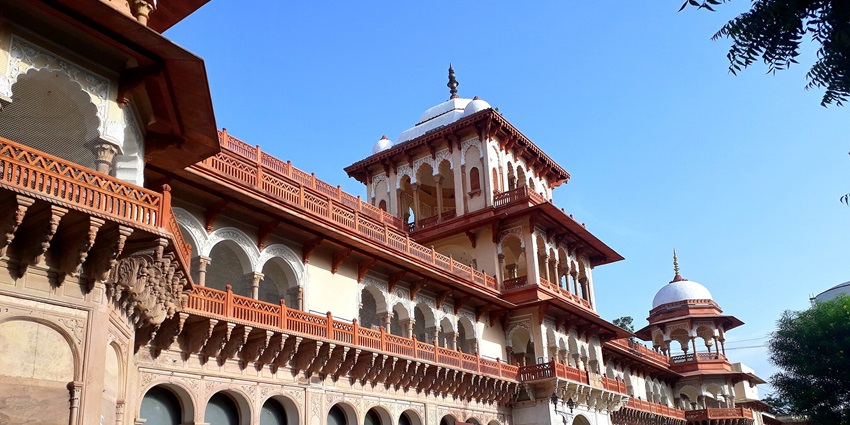
Photo: Ravikrishnan A K / Wikimedia Commons
Jhalawar Fort, also known as Garh Palace, is a splendid 19th-century palace built by the renowned king Maharaja Rana Madan Singh. It showcases a blend of Rajput and Mughal architectural styles, with beautifully painted halls and frescoes. Inside, visitors can explore a museum featuring royal artefacts, weapons, and manuscripts, providing a glimpse into the region’s rich history and culture. The palace’s architecture reflects the opulence of Rajasthan’s royal era. Its murals and ceiling art offer intricate details of the period’s craftsmanship, making it a must-see for history enthusiasts and art lovers alike.
Timings: 10 AM – 5 PM
Entry Fee: ₹50 / USD 0.60 (Indians), ₹100/USD 1.2 (Foreigners)
Suggested Read: A Journey Through Rajasthan Forts
2. Gagron Fort
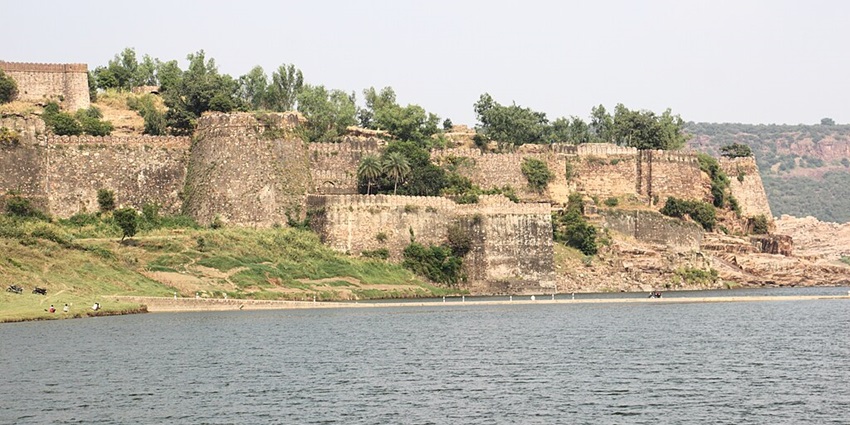
Photo: Ravikrishnan A K / Wikimedia Commons
Gagron Fort is a UNESCO World Heritage Site and one of India’s rare hill and water forts, encircled by the Ahu and Kali Sindh rivers. Built in the 12th century, it has witnessed many battles and offers breathtaking views of the surrounding landscape. The fort’s strategic location and historical significance make it a must-visit for history lovers and architecture enthusiasts. It is known for its unique defence system using natural barriers. The fort also has religious importance, with nearby shrines dedicated to Sufi saints, adding to its spiritual charm and cultural depth.
Timings: 9 AM – 5 PM
Entry Fee: Free
3. Chandrabhaga Temple
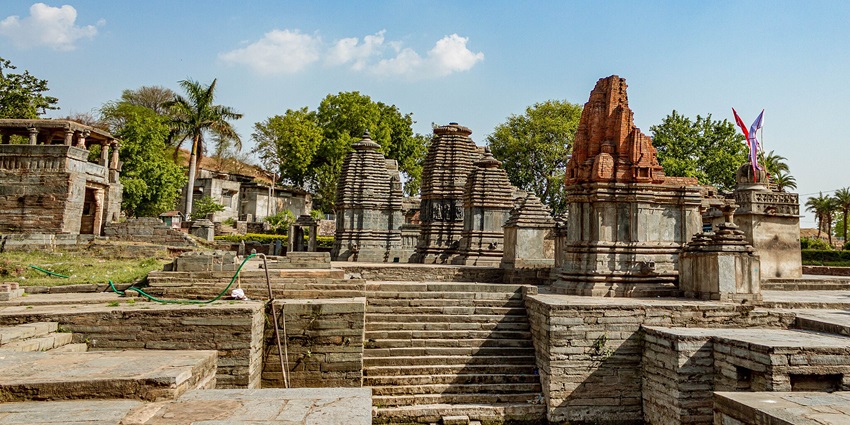
Photo: Devendra Trivedi / Wikimedia Commons / Image For Representation Only
Chandrabhaga Temple, situated on the banks of the Chandrabhaga River, is a collection of intricately carved temples dating back to the 7th century. Dedicated to Lord Shiva, the temple complex showcases a very distinctive Rajput-style architecture. The peaceful ambience and detailed stone carvings on the walls and pillars make it a spiritually enriching and visually captivating experience for visitors. During the Chandrabhaga Fair, the temple becomes a hub of spiritual activity, drawing pilgrims from across the region. Its picturesque riverside setting adds to the overall tranquillity, making it an ideal spot for reflection and meditation.
Timings: 6 AM – 8 PM
Entry Fee: Free
Suggested Read: Top Temples In Rajasthan To Visit On A Religious Trip
4. Buddhist Caves Of Hathyagor
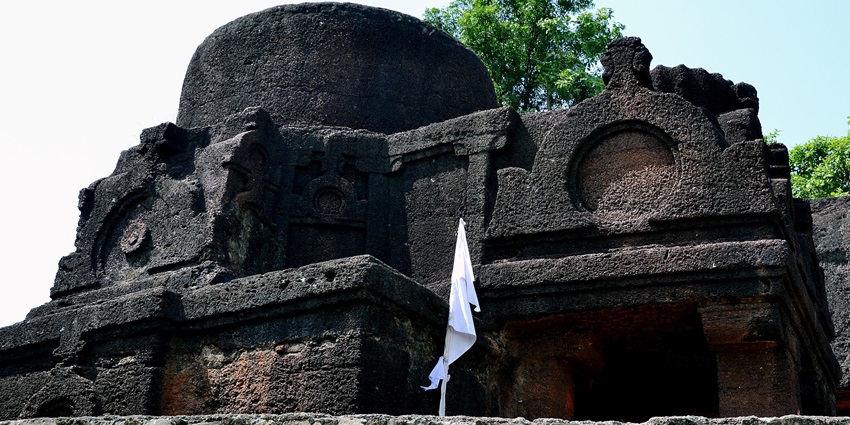
Photo: Siddharth tiwari / Wikimedia Commons / Image For Representation Only
The Buddhist caves at Hathyagor, located near Kolvi, are another important relic of ancient Buddhist architecture in Rajasthan. The caves feature rock-cut viharas, stupas, and meditation cells, like the popular caves in Kolvi. These caves are less crowded, offering a serene environment for those interested in Buddhist history and architecture, making it a perfect spot for quiet exploration. The tranquil surroundings of Hathyagor make it a peaceful retreat for meditation. The site also provides an immersive experience into the spiritual practices of early Buddhist monks, making it historically and spiritually significant.
Timings: 8 AM – 6 PM
Entry Fee: Free
5. Government Museum, Jhalawar
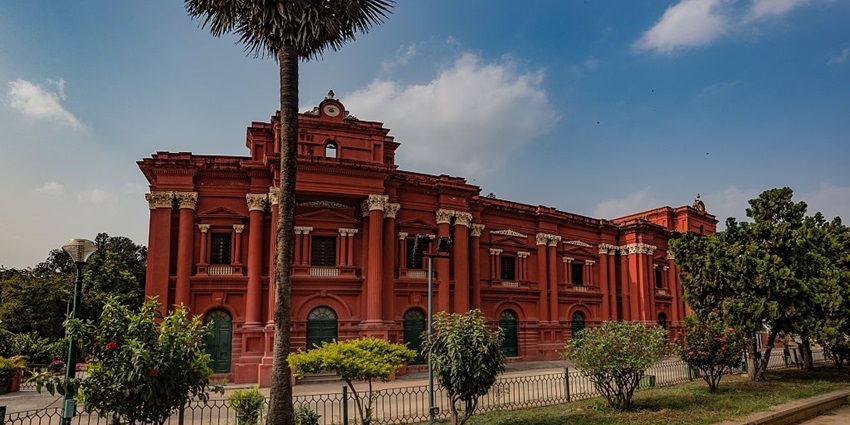
Photo: Bikashrd / Wikimedia Commons / Image For Representation Only
The Government Museum in Jhalawar, established in 1915, is one of the oldest museums in Rajasthan. It houses a vast collection of artefacts, including ancient coins, sculptures, inscriptions, and manuscripts that highlight the region’s history and heritage. The museum offers a fascinating journey through Jhalawar’s cultural evolution, from its ancient roots to its royal past. Exhibits include rare stone statues from the Gupta and mediaeval periods, adding depth to the museum’s appeal. It serves as a key educational centre, providing visitors with comprehensive insights into Jhalawar’s diverse historical narrative.
Timings: 10 AM – 5 PM (Closed on Fridays)
Entry Fee: ₹20 / USD 0.24
Suggested Read: Brij Vilas Palace Government Museum
Where To Stay
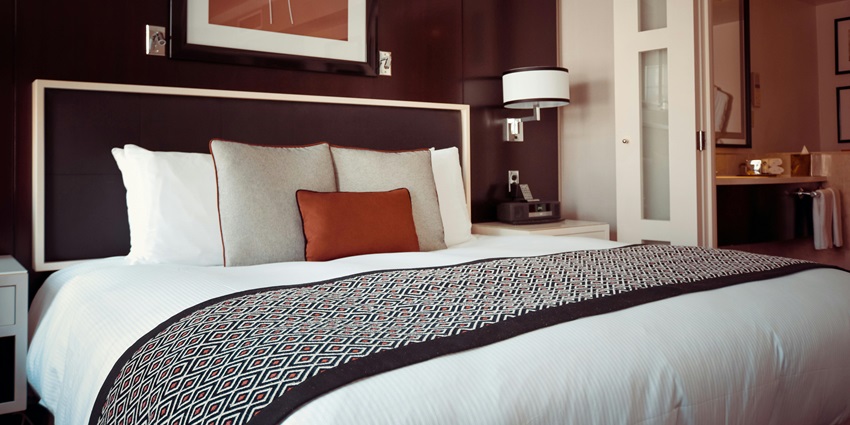
Photo: Pixabay / Pexels / Image For Representation Only
When visiting the best caves in Kolvi, the nearby city of Jhalawar offers a range of comfortable accommodation options. From budget-friendly guesthouses to mid-range hotels, visitors can find a place to suit their needs. Popular choices include Hotel Jhalrapatan Palace and RTDC Circuit House, known for their convenient location and basic amenities. For a more luxurious stay, Kota, around 120 kms away, offers upscale hotels with modern facilities. Staying in Jhalawar or Kota ensures easy access to the caves and nearby attractions.
Where To Eat
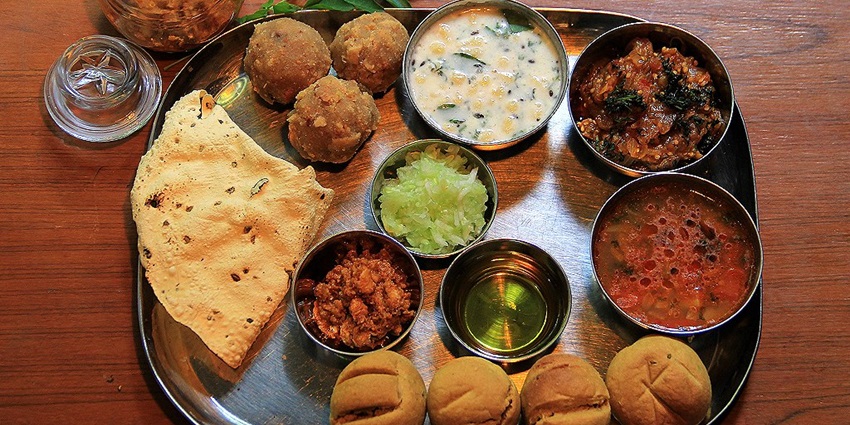
Photo: Niranjan.gohane / Wikimedia Commons / Image For Representation Only
While visiting historical caves in Kolvi, dining options in Jhalawar are varied and cater to different tastes. Local eateries such as Dosa Plaza and Shree Gopal Restaurant offer delicious Rajasthani and Indian cuisine at reasonable prices. For a more casual experience, local street food stalls serve snacks and traditional dishes. About 120 kms away, in Kota, you’ll find a wider range of restaurants, including upscale dining options. Both Jhalawar and Kota provide ample choices for satisfying meals during your trip.
Suggested Read: The Best Foods In Rajasthan
Best Time To Visit
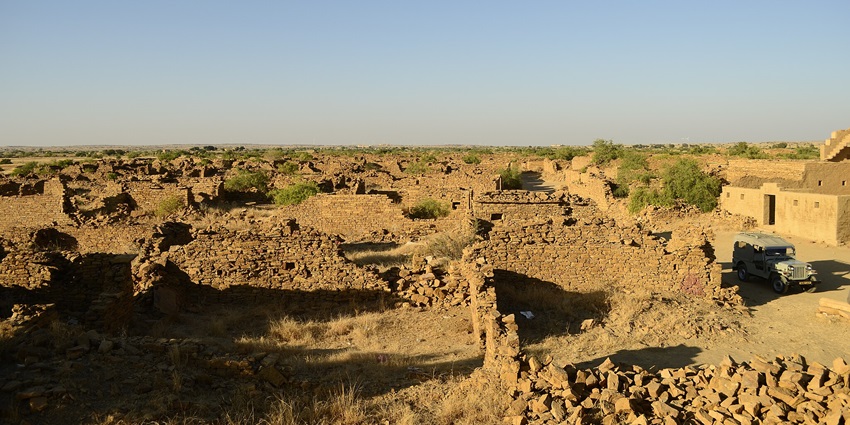
Photo: Ana Raquel S. Hernandes / Wikimedia Commons / Image For Representation Only
The best time to visit the famous caves in Kolvi is during the cooler months, from October to March. During this period, temperatures are more comfortable, ranging from 15°C to 30°C (59°F to 86°F), making exploration enjoyable. The summer months, from April to June, can be extremely hot, with temperatures soaring above 40°C (104°F), which may make the visit less pleasant. Monsoon season (July to September) can bring heavy rains, potentially affecting travel plans. Thus, the winter and early spring months offer the most favourable conditions for exploring the caves.
Other Factors To Consider
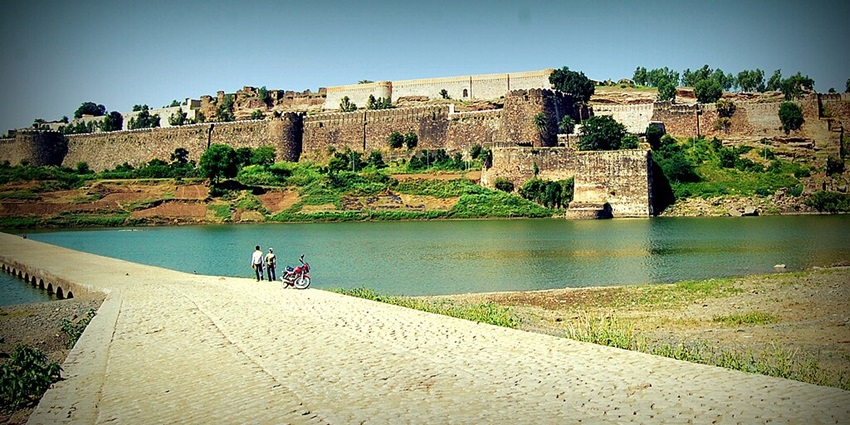
Photo: Sagar581 / Wikimedia Commons / Image For Representation Only
When visiting Kolvi Caves, consider the following factors:
- Weather Conditions: Check the weather forecast before your visit, as the caves are best explored in cooler months to avoid extreme heat or heavy rain.
- Footwear: Wear comfortable, sturdy shoes suitable for uneven terrain, as the area around the caves can be rocky and slippery.
- Travel Logistics: Plan your route and transportation, as the caves are in a remote location with limited public transport.
- Local Etiquette: Respect local customs and traditions, especially when visiting religious sites within the caves.
- Permits: Confirm if any permits or entry fees are required, though usually not needed, for Kolvi Caves.
Suggested Read: Places To Visit Near Rajasthan For A Memorable Vacation Experience
A journey to the Kolvi Caves offers more than just a glimpse into ancient Buddhist architecture; it’s an immersive experience into a serene, forgotten world. As you wander through these remarkable sanctuaries cut from rock, you’ll be transported back to a time of historical significance and deep spiritual contemplation. The tranquil surroundings, combined with the caves’ rich heritage, create a unique escape from modern life. Whether you’re a history enthusiast, a spiritual seeker, or simply an adventurer at heart, Kolvi Caves promises a memorable exploration.
Cover Photo: Siddharth tiwari / Wikimedia Commons


 WhatsApp
WhatsApp
 Twitter
Twitter









